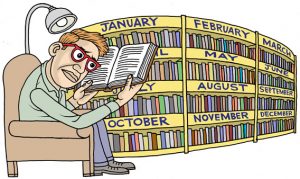 Tai Lopez’s reading method…
Tai Lopez’s reading method…
What he can’t see he cannot teach you, because for him it is like water for the fish… invisible.
Tai Lopez started to read when he was barely potty trained. And has read, ever since.
His grandfather gave him the kinds of books that train circular reading… the history of the world, encyclopedia…
Thus he build a body of knowledge, a fertile soil, that almost any new information can sprout roots into.
In this regard, he is unique, and as different from most people, as he can be.
He has a reading method, the book-a-day method, that he teaches to people who have no body of knowledge, no fertile soil… and the question is: can the method be useful for you?
In order to reading… is that a good thing?
Click to read Tai Lopez vibrational review
Reading, in order to… in order to learn something for some future purpose, to pass an exam, to impress someone, to learn how to do something, is bound to be a failure.
So, the number one thing Tai Lopez doesn’t ask you, is that you stop reading in order to.
When you do anything in order to, you are being forceful, violent, and it is a beingness state that is not conducive to reading that connects to what you already know… and the results will be poor.
I prepared for, altogether, some 100 exams in my first 34 years. Some of those required a lot of reading.
My method of reading was to get interested in the topic, and except for two, maybe three subjects, I succeeded.
So I read slowly and attentively, and made sure I integrated what I read into what I already knew.
My friends in all those courses, at the Universities I went to, were cramming for exams. I didn’t.
When we compare notes today, their knowledge was not integrated, and disappeared in about 48 hours, mine didn’t. Hasn’t.
So how does Tai Lopez integrate what he reads?
- Step one: Pick a book. Get what the book is about, what is its structure, who wrote it, what other people said about it. Read the table of contents… and allow something to jump at you… something you would want to read, something you can relate to.This creates interest, the most important element for the material to integrate. 1
- Step two: Then read, however you read. You can speed-read, PhotoRead… or just read the way I read… like a pedestrian.Warning: if you don’t have a knowledge foundation that the new book can connect to, it is going to be hard to retain it.
- Step three: activate the knowledge by mind-mapping it, teaching it, explaining it, or write a detailed report on it. Tai uses his book club, book a day talks for this… Activation is finalizing the connecting the new knowledge to the body of knowledge you hopefully have.
Now, why do you need this?
Or maybe another good question: do you need this if you don’t have an extensive and integrated knowledge base? Like my classmates at University…
So let’s look at Knowledge Base… how to build it, and what it’s good for.
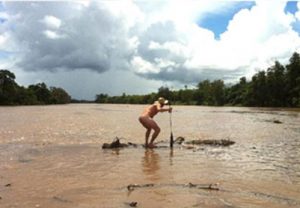 The example of a wooden log comes to mind.
The example of a wooden log comes to mind.
Let’s say you want to travel down the Mississippi… and all you have is a log… It is hard to stay on top, so you’ll spend most of your time fallen off the log.
If you have two logs, and you find an ingenious way to connect them, to tie them together, you are vastly better off: you’ll fall off less often, and maybe you’ll be able to sleep without worrying of falling into the water while you sleep.
The more logs you an tie together, by building a raft, the more freedom you have, and the easier and safer the travel will become.
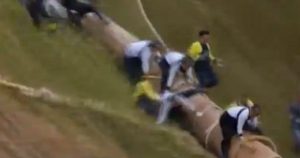 The individual logs are individual books… not just a piece of knowledge, like what you glean from an article or from a youtube video, even if it is a TED talk… No, a book.
The individual logs are individual books… not just a piece of knowledge, like what you glean from an article or from a youtube video, even if it is a TED talk… No, a book.
People who have been reading from early childhood are much better off in this game: this is how come Tai Lopez is so good at it.
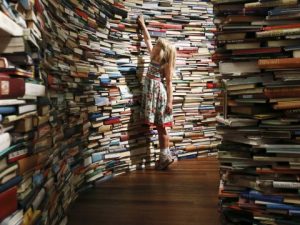 I, myself, was a reader of stories, novels, but my knowledge base, the tying together, happened on a summer, after my third year in elementary school.
I, myself, was a reader of stories, novels, but my knowledge base, the tying together, happened on a summer, after my third year in elementary school.
I was around nine. 2
I won a math book in a math competition, and I took it with me on vacation. It was the kind of book, much like an encyclopedia, or a dictionary, where in each heading there were instructions to go to this other heading. It went round and round, and you never got to the end of the book. But everything got tied to everything else.
I loved the process.
Some ant species’ longevity comes from this principle: everything is tied to everything else.
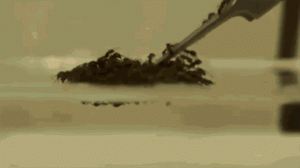 Whenever there is flood, which for ants happens after every big rain, the ants create an unsinkable raft of themselves, and float away to safety… while individual ants would drown.
Whenever there is flood, which for ants happens after every big rain, the ants create an unsinkable raft of themselves, and float away to safety… while individual ants would drown.
Knowledge behaves the same way. The individual pieces of knowledge can form a raft, but unfortunately it is not automatic.
- Learning ‘in order to’ creates knowledge that doesn’t have “legs”… to connect with.
- Tiny pieces of knowledge, like magazine articles, superficial knowledge, don’t create a raft… But if you already have a raft, then they can fill in some holes, or give a different view…
There is all kinds of knowledge… for example… epistemic knowledge, the kind you learn in school. 3
The three kinds of knowledge, according to some schools of thought are
- Personal Knowledge The first kind of knowledge is personal knowledge, or knowledge by acquaintance. This is the kind of knowledge that we are claiming to have when we say things like “I know Mozart’s music.”
- Procedural Knowledge The second kind of knowledge is procedural knowledge, or knowledge how to do something. People who claim to know how to juggle, or how to drive, are not simply claiming that they understand the theory involved in those activities. Rather, they are claiming that actually possess the skills involved, that they are able to do these things.
- Propositional Knowledge The third kind of knowledge, the kind that philosophers care about most, is propositional knowledge, or knowledge of facts. When we say things like “I know that the internal angles of a triangle add up to 180 degrees” or “I know that it was you that ate my sandwich”, we are claiming to have propositional knowledge.
Most of us have, at best, a flimsy body of knowledge in all three areas… meaning, the raft has big gaping holes, and some knowledge is difficult to add because it doesn’t connect.
The main purpose of school education is to build a body of knowledge.
Of course the teachers don’t know that… If they did, they would make some efforts to connect what each individual teacher teaches to other subjects, but they don’t, or most likely they themselves don’t have their knowledge connected to anything… They have one, maybe two logs to navigate life. Not the person you would want to emulate.
What happens when you want to learn something new? When you decide to start something new?
There are a lot of people I’ve been observing for a while, who buy programs, who try to build a business, who try to make money with a flimsy, or non-existent knowledge base to support their efforts.
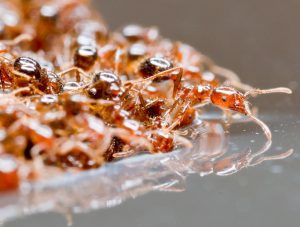 Conscious reading, conscious learning over time, can make them able to do what they hope to do. But without that, the knowledge in a new program, for example, has no legs to stand on. It is like a fire ant without a tribe. Drowns. (This is so frequent, I’d be surprised if you didn’t recognize it as the real cause of your many broken dreams!)
Conscious reading, conscious learning over time, can make them able to do what they hope to do. But without that, the knowledge in a new program, for example, has no legs to stand on. It is like a fire ant without a tribe. Drowns. (This is so frequent, I’d be surprised if you didn’t recognize it as the real cause of your many broken dreams!)
By conscious reading I mean the type or reading where you consciously take pauses and integrate what you just read into what you already know. These conscious pauses and the activity of reflection, builds the “legs” the knowledge needs to form a raft.
In the 67 steps, given the circular nature of the material Tai presents, and the requirement to read books, preferably the books that are on the book list, this process becomes easier, and guided.
Why read the books on the book list instead of whatever you fancy?
Because those books can connect to the knowledge taught in the 67 steps faster and more naturally.
Picking up books that are not connected, The autobiography of a yogi, for example, starts disassembling your raft… and give you a sense of drowning.
Stick with the books on the list. You’ll thank me later.
Please keep me informed on how it is going, or if the instruction in this article is not sufficient to get you going. I am very curious and motivated to cause your success.
Could Tai Lopez read anything, any book, and integrate it?
I doubt it. He has a certain body of knowledge that does not include large areas of knowledge. He knows nothing much about spirituality. He knows nothing much outside of his primary interest, finance and business. Even his knowledge about health, and body is flimsy. Relationship… flimsy. But he is working on this last one… I guess the selfish gene wants him to procreate… lol.
- Stories, novels, don’t build a knowledge base. Stories and novels feed your human hunger for stories… but you need the instruction, the knowledge of humanity carefully tied together, to build a knowledge base. Studies show that experimental schools, progressive schools, often leave the students with capacities, creativity, but no knowledge base. As boring, as restrictive school learning seems, you need it if you want to amount to much… apart from some very creative specialists, like Steve Jobs, Bill Gates, etc. most people with shallow or not existent knowledge don’t do well in life. But if you dig deep, even those “giants” of a human, picked up reading later in life.
- of or relating to knowledge or to the degree of its validation.
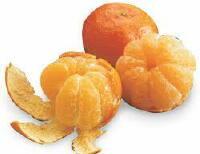
No resistance. I was confirming whether I understood. I do not think I am scot free at any point. Lol
I tell you what novels, good novels teach you: they teach you others think and feel differently than you think they do. That others have a rich inner life, and most of it has nothing to do with you.
there was a long period in my life where I shied away from novels, because they are so seductive… and those are the periods in my life where I was most unhappy, I thought that everything was about me.
Now I read one novel for every two non-fiction books.
Please don’t forget that I am ahead of you by about 10 thousand books…
in your case, specifically, I do recommend novels. Good novels. NOT action novels, but novels where most of the things that happen are inner.
Hi Sophie, Do you still recommend reading novels?
I hear resistance.
I hear that because you integrate the steps you are scot-free
But here is the rub: the steps are like articles. the knowledge came from books… without actually going the source, you are still skimming…
not too bad for the first round in the 67 steps, but for the second round: it is a must to go to the source. Just like with my articles… the books I mention are the going-deep resources.
Did I misunderstand and you expressed no resistance?
So, build the raft through guided reading first, making connections along the way as I read. Very clear. Creating a background from which to make connections. For me, taking notes, restating what I’ve read, and outlining help integrate.
good choice. although, my hunch, it is going to be confronting to you.
Why? because to become curious you have to take your eyes off yourself… and for you it is near impossible at this stage.
‘Curious’ by Ian Leslie.
and which book/what book did you buy?
This article made me go buy my first kindle book on Amazon, Curious.
Time to start investing in a raft more seriously.